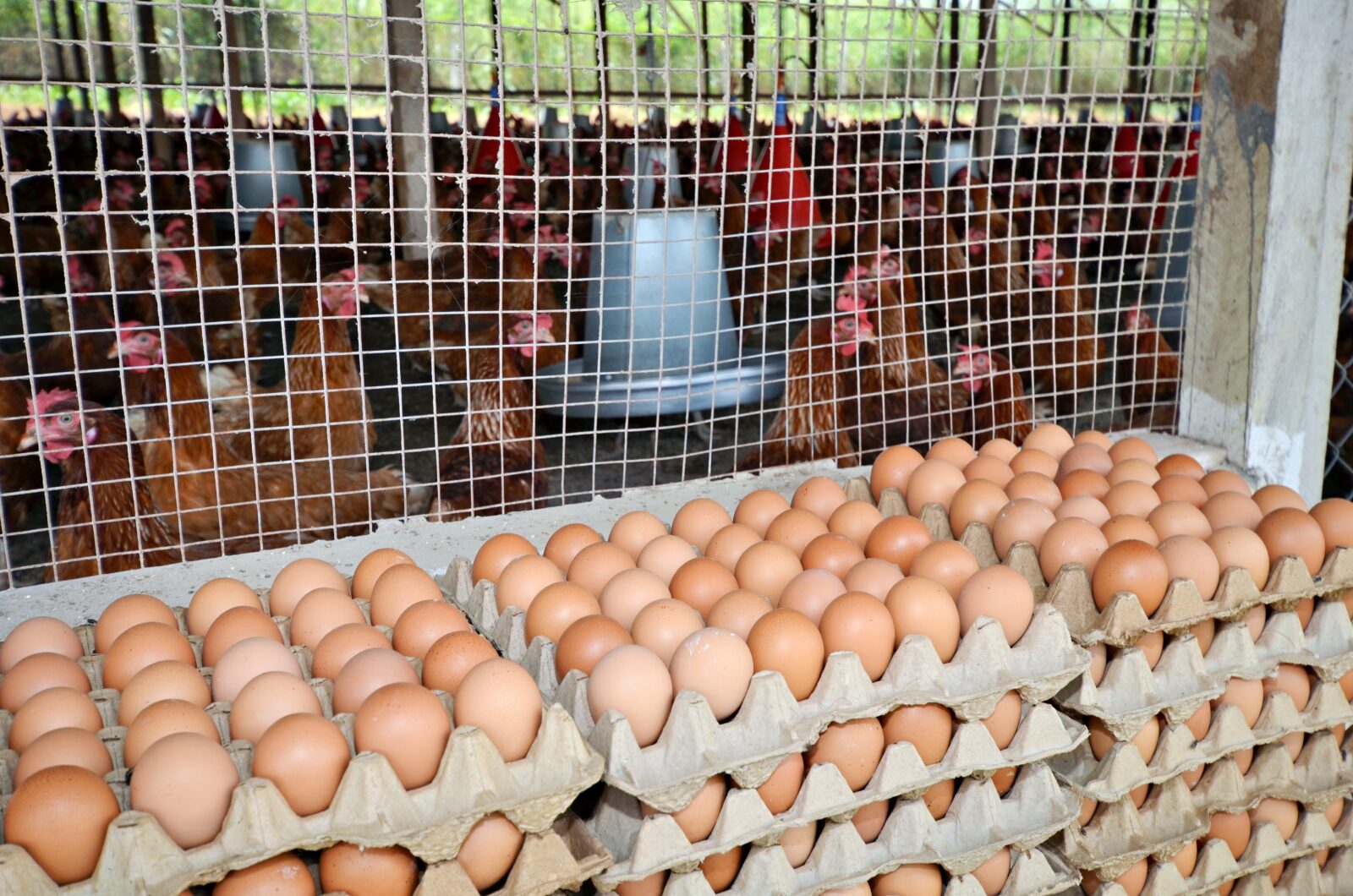Laying hens — or at least the eggs they produce — have made global headlines in recent years. Supply chain challenges related to COVID-19 impacted egg supplies throughout 2020 and 2021. And in 2022 and 2023, egg prices skyrocketed following outbreaks of avian influenza, or bird flu, in the Americas, Europe and Japan.1 Prices fell again in some regions in early 2023, as supply caught up.
Despite this economic roller coaster, eggs of all types continue to be a relatively affordable source of nutrient-dense, high-quality protein.
“Because of the protein and other nutrients they provide at a relatively low cost, eggs have been highlighted as a solution to address protein deficiencies for people around the world,” says Keenan McRoberts, Ph. D., vice president of strategic alignment for the United Soybean Board. “U.S. Soy can play a key role in that solution.”
So which came first, the chicken or the egg? Neither, according to McRoberts. It’s the diet that fuels them both.
For egg farmers, feed accounts for 60 to 70% of the total cost of egg production,1 and protein is one of the most expensive components of the diet for laying hens. With the price of many goods rising, from fuel for transportation to materials for packaging, egg producers strive to get the most out of poultry feed. Feed affects growth, development and health, as well as the quality and quantity of eggs laid.
“For example, with the right diet, chickens can lay about 300 to 325 eggs in a year,” says Stacey Roberts, Ph.D., director of nutrition for Versova, a U.S. egg production company. “Laying hens digest the protein they eat, breaking it down into amino acids they absorb. Then, they rebuild those amino acids into egg protein and other proteins they need to stay healthy.”
U.S. Soy Supports Hen Nutrition to Support Human Nutrition
Eggs contain all nine essential amino acids people need in the food they eat in a highly digestible form.2 Amino acids are the building blocks of protein. Essential amino acids must come from food, because they can’t be made inside the body. Eggs also provide essential vitamins and minerals, like choline for brain health, vitamin B12 to support blood and nerve cells and DNA production, and iodine to help regulate metabolism, support bone development and more.2
Eggs produced for human consumption are not fertilized.
“However, the reason eggs are such a complete source of nutrition is because each egg contains all the nutrients a baby chick would need to grow and develop,” Roberts explains. “That includes protein, minerals and beneficial fats.”
She says soybean meal, often from U.S. Soy, has a nutrient profile that lines up well with what the birds need to thrive — and lay eggs.
Soybean meal includes the components of soybeans that remain after oil is extracted. It is high in protein and energy, making it an important ingredient in poultry feed. For example, Roberts recommends soybean meal makes up about 20 to 30% of the feed laying chickens eat.
“Soybean meal provides value for the cost of protein in feed because it has a more favorable nutrient profile than other protein ingredient options,” she says. “Feed that includes soybean meal usually needs less supplemental amino acids.”
Hen diet, more than egg color, cost or farming style, impacts the nutrients in their eggs.3 U.S. Soy provides a sustainable source of protein meal with an amino acid profile that supplies hens with the protein they need to develop those eggs, as well as some of the energy to produce them.
Soybean meal contributes to more effective egg production to support human protein needs.
U.S. Soy Powers Growing Egg Demand
Globally, protein demand is growing, and eggs are part of that. Global egg production is projected to increase about 11% from 2022 to 2032, a rate of about 1.1% per year.4 During that period, per capita egg consumption is estimated to increase about 4.6%.4
“That will create a similar growing need for quality feed ingredients for layers,” says McRoberts, with the United Soybean Board. “U.S. Soy is positioned to meet that need sustainably.”
Feed — including soybean meal — plays a key role in egg production and, by extension, global food security.
For example, Ghana’s economy was growing quickly in 2019. A partnership with the World Initiative for Soy in Human Health, or WISHH, helped local feed mills and farmers learn to protect and improve the quality of poultry feed. At the same time, the project’s National Egg Campaign promoted the health benefits of eggs to customers.
“Ghanaian farmers saw the benefits of using soy as the primary protein source for their feed,” reports Roberta Simpson-Dolbeare, who farms near Nebo, Illinois, and serves as the chairman of the WISHH Committee. “Feeding birds to meet their nutritional needs can improve flock health and lower production costs. At the same time, per capita egg consumption increased in Ghana, which translates to more people getting the protein they need.”
Better nutrition for both hens and humans links to improved global food security. Through quality soybean meal, U.S. Soy provides sustainable support in working toward that goal.
References
1 Eggflation: What Happens After Egg Prices Reach Historic Highs, RaboResearch, Rabobank, April 2023.
2 The Value of Eggs, American Egg Board, accessed May 2023. The science behind the high-quality protein in eggs, Egg Farmers of Canada, August 12, 2021.
3 What are the Nutritional Differences for Different Types of Eggs? American Egg Board, November 20, 2020.
4 Egg projections: Production and food consumption, OECD-FAO Agricultural Outlook 2023-2032.
